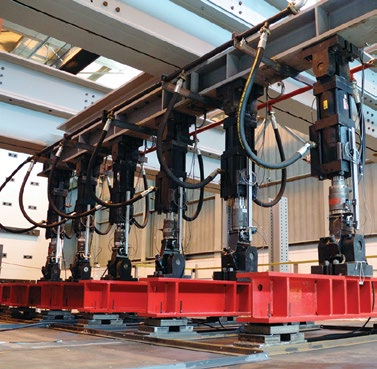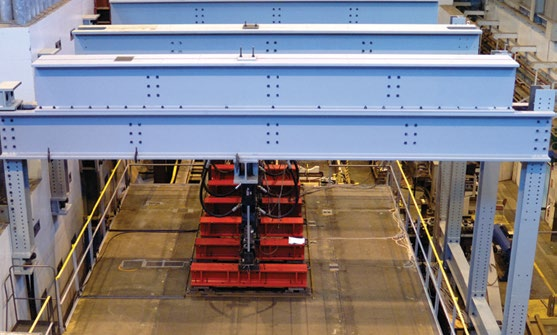With two towers reaching 700 feet into the sky and a span that stretches nearly a mile, the Verrazano-Narrows Bridge is a familiar beacon to travelers driving from New Jersey to New York City.
The bridge, the largest suspension bridge in the U.S., opened in 1964. Five years later, to accommodate increased traffic, a lower deck was added.
Now, New York City’s Triborough Bridge and Tunnel Authority (TBTA) has decided to replace the original, upper deck – a grid of steel beams overlaid with concrete – with a steel orthotropic deck.
TBTA’s decision, says Sougata Roy, was necessitated in part by security measures taken after Sept. 11, 2001. Fearful of a possible terrorist attack on the bridge, TBTA restricted truck traffic to the upper deck to limit damage from explosives that might be detonated inside a truck. The resulting heavier traffic loads accelerated damage to the upper deck. TBTA retrofitted the deck with new concrete, but with limited success.
Roy, a senior research scientist in Lehigh’s ATLSS (Advanced Technology for Large Structural Systems) Center, is testing a full-scale prototype of the orthotropic deck that will be used as the VerrazanoNarrows’ replacement deck. The experiments are taking place in ATLSS’ structural testing lab, whose test floor and fixed reaction walls, among the world’s largest, impose multidirectional loads that simulate the demands structures sustain from traffic, wind and earthquakes.
Roy, the project’s principal investigator, is being advised by former ATLSS director John W. Fisher, who supervised stress tests in the 1990s on prototypes of orthotropic decks for New York’s Williamsburg and Bronx-Whitestone bridges.
“Orthotropic decks, properly designed, are the only decks that can enable bridges to achieve 100 years of service,” says Roy. “That’s the lifespan suggested by the U.S. Federal Highway Authority. Our goal is to verify whether it can be done.”
An orthotropic deck has different stiffnesses in perpendicular directions. The stiffening ribs of the deck plate run parallel to the bridge’s length. Transverse plates, or diaphragms, run perpendicular to the ribs and are spaced intermittently, providing less stiffness transversely than longitudinally
This asymmetry, says Roy, enables an orthotropic deck to distribute loads from trucks to a bridge’s structural supporting elements with more efficient use of material. This allows for a more lightweight deck, which reduces stress to the deck and the suspension cables that support it.
But the asymmetry also increases the complexity of the stresses in the deck’s components and requires sophisticated analysis of the deck and the welds connecting the bridge elements. If welded connections are not designed and fabricated correctly, says Roy, cracking and crack propagation can result.
Two connections pose particular challenges, says Roy. Cutout areas, where ribs pass through the transverse diaphragm plate, rotate across the diaphragm in response to truck loading and develop a complex combination of in-plane and out-of-plane stresses. Secondly, the connection between enclosed ribs and the deck plate must be made from outside. The heat applied for rib-to-deck plate welding requires careful calibration: Too much can cause melting through the thin ribs. Too little can result in inadequate penetration, a poor connection and premature cracking.
Roy’s group is testing a prototype deck panel that measures roughly 25 feet by 25 feet and is integrated with floor beams and stringers to simulate actual bridge conditions.
Six hydraulic actuators above the deck impose loading in sequence to mimic the passage of trucks. Three actuators beneath the deck simulate the global deformation imposed by truck loads. Roy is using Lehigh’s high performance computing (HPC) capabilities to model and analyze the entire setup.
“HPC enables us to better predict the system performance of a deck,” says Roy. “The physical results allow us to calibrate our HPC models. Then we can develop a framework to design and simulate the behavior of bridge decks with computational modeling and without expensive lab work.
“Our goal is to develop specifications for the robust design of new decks that can last a century.”



